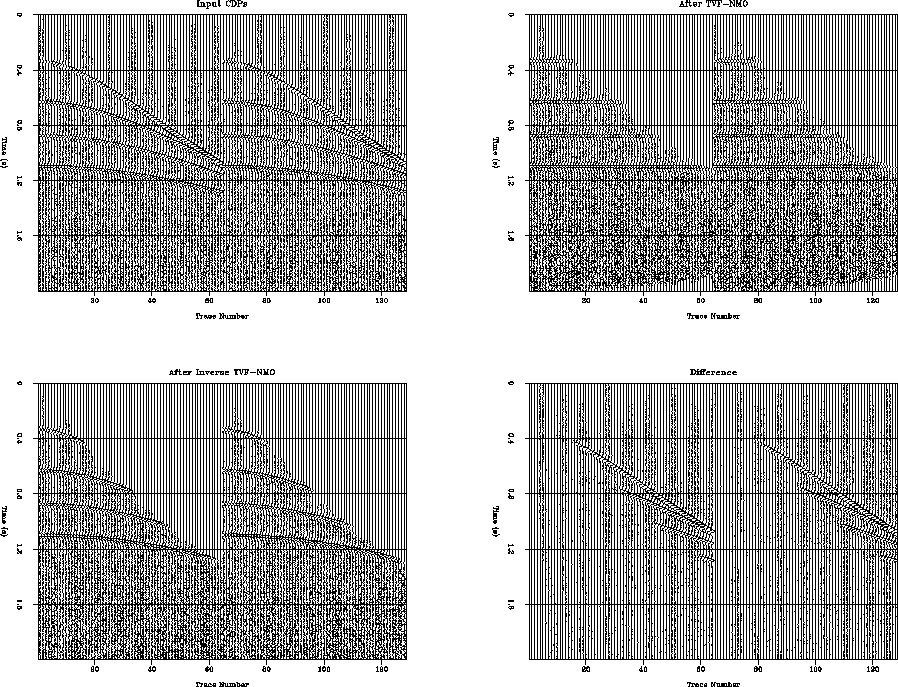




Next: Summary and Conclusions
Up: Results and Discussion
Previous: Real Data
nmo1
Figure 8 Frequency domain NMO correction. On the
top left, the input synthetic data. On the top right the NMO-corrected data.
On the bottom left inverse NMO-corrected data and on the bottom right
the difference of the inverse NMO-corrected and the input data. Clearly the
difference is due to NMO stretch





The top left-hand side of Figure 8 shows a modeled CMP
gather consisting of five reflections in a Gaussian noise background. The top
right hand-side shows
the result of applying NMO correction using the time-variant filtering
algorithm described above. The fractional sample interpolation parameter was
set to two, meaning that a nearest neighbor interpolation was implicitly
performed in the frequency domain to half the sampling interval. Changes in the
fractional interpolation parameter would allow for better interpolation at the
expense of increased run-time. The result shows a very good correction with
very little distortion even for this small interpolation value.
The same algorithm used for forward NMO correction was also applied
for inverse NMO correction. The bottom left panel of Figure 8 shows
the inverse-NMO corrected CMP gather. Finally,
the bottom right panel of Figure 8 shows the difference between
the original data and the inverse-NMO result. Except for the
obvious effect of the NMO-stretch mute, the inverse NMO-corrected CMP is nearly
identical to the original CMP.





Next: Summary and Conclusions
Up: Results and Discussion
Previous: Real Data
Stanford Exploration Project
6/8/2002
